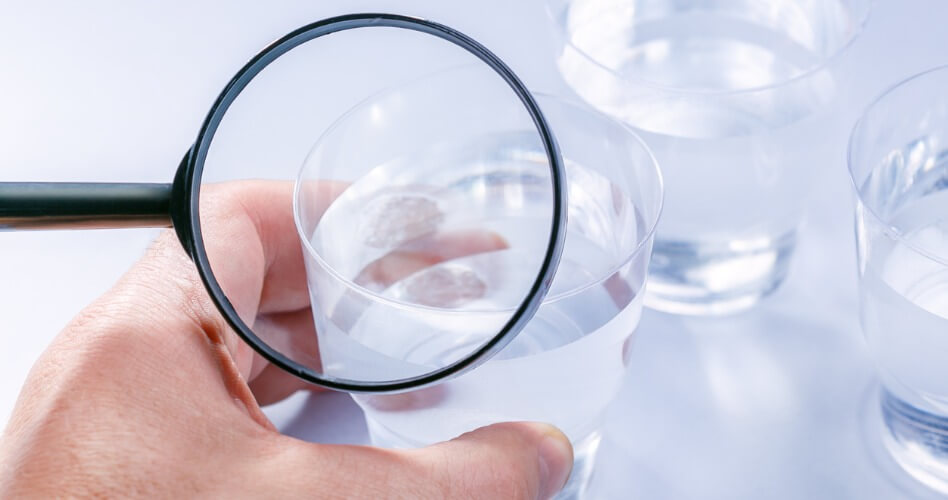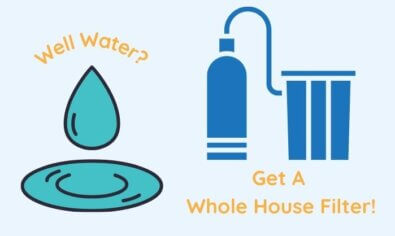PFAS in Chicago Water: How to Avoid Dangerous Forever Chemicals
This blog features the following key takeaways:
● PFAS, also known as forever chemicals, are human-made chemicals that don’t degrade easily but instead last for a long time.
● PFAS get into Chicago water through manufacturing contamination, chemical runoff and landfill pollution.
● The many health problems associated with PFAS include kidney cancer, thyroid cancer and high cholesterol.
● The best way to get PFAS out of your drinking water is with an NSF/ANSI 58 certified reverse osmosis system.

These chemicals are called PFAS. A recent investigation by Michael Hawthorne of the Chicago Tribune revealed an overabundance of PFAS in Chicago water and throughout Illinois. The study estimates that more than 8 million residents in the state have forever chemicals in their water.
So, what does this mean for you, and how do you protect yourself from these harmful chemicals? In this post, we will walk you through everything you need to know about how to avoid forever chemicals to keep your health and family safe.
As we will see, one of the best ways is to invest in an NSF/ANSI 58 certified reverse osmosis system. Want to learn more about the high-quality reverse osmosis systems we provide? Visit our product page at the link below.
What are PFAS Chemicals?
PFAS is a group of human-made chemicals known as perfluoroalkyl or polyfluoroalkyl substances. There are nearly 4,700 chemicals that make up the PFAS family. However, the two most common are perfluorooctanoic acid (PFOA) and perfluorooctane sulfonate (PFOS).
All PFAS chemicals consist of incredibly strong chains of fluoride-carbon bonds. These bonds are some of the most difficult to break in all of chemistry. As a result, PFAS can remain in the environment and the human body for many years without breaking down. For this reason, they are often referred to as “forever chemicals.”
Where are Forever Chemicals Found?
PFAS contamination is widespread throughout the United States because the chemicals were a key ingredient in the production of many products for several decades. Manufacturers loved these chemicals because of their unique ability to repel oil, grease and water. The chemicals were especially handy for making stain removers and nonstick cookware.
The two companies most famous for using PFAS in their manufacturing were DuPont and 3M. DuPont first used PFOA to create its nonstick Teflon food packaging in 1946. And 3M used PFOS to create its popular Scotchgard products.
Other products that were created with PFAS over the years include:
- Flame-retardant products
- Paper food packaging
- Stain-proof rugs
- Waterproofed clothing
- Floss
- Cookware
PFAS were manufactured throughout the country for decades before the health risks became apparent. Since the early 2000s, American companies have phased out PFAS in their products. Unfortunately, by this point, the damage had already been done since PFAS use was so widespread and the long-lasting chemicals had already infiltrated the environment.

How Do PFAS Chemicals Get in Chicago Water?
There are many sources of PFAS contamination in water, but the most common is pollution from the manufacturing process.
Back when the use of PFAS was widespread, manufacturers would pollute the water supply by flushing the machines they’d use to make their products. This contaminated water would get into the septic system and eventually wind up back in the lakes and rivers we use for our water supply.
Other ways PFAS can get in our water today are chemical runoffs and pollution from landfills. For example, when discarded food packaging with PFAS breaks down, the chemicals often seep into the groundwater.
Even though fewer manufacturers use PFAS these days, pollution is still a problem since some of the chemicals can last 100 years or more. In fact, it is estimated that today 110 million Americans have drinking water contaminated by PFAS.
What are the Health Effects of PFAS in Drinking Water?
PFAS have been linked to several dangerous health conditions, the most notable being cancer. In 2017, the International Agency for Research on Cancer (IARC) labeled PFAS as a possible carcinogen. And as more research has come out since, scientists have seen a clearer and clearer connection between the chemicals and many forms of cancer, including kidney and testicular cancer.
Beyond this, studies have also linked exposure to PFAS to many other health conditions, including:
Illinois Water Utilities have been reporting some gross contaminants!
Check out the concerning contamination that has been reported by public water utilities in Illinois!

- High cholesterol
- Ulcerative colitis
- Thyroid problems
- Developmental problems
- Weakened childhood immunity
- Low birth rate
- Endocrine disruption
- Weight gain in children
Of course, we should note that not all PFAS come with these health risks. PFAS is a group of thousands of chemicals, each with its own unique chemical composition. So, certain chemicals will be more dangerous than others.
How Much PFAS is Safe to Consume?
It’s natural to wonder how much PFAS you can safely consume. But here’s the thing: no amount of PFAS is safe. As the Chicago Tribune reports in its article, the Environmental Protection Agency (EPA) has declared that there is no safe level of exposure to two of the most common PFAS. Even the smallest amount of certain PFAS can cause the health problems listed above.
So, while the official EPA limit for PFAS in drinking water is 70 ppt, that should not be the guideline for your health. We recommend a much stricter zero-tolerance policy for PFAS to keep your water clean and healthy. We’ll talk more about how to do that below.
How Long Do PFAS Chemicals Stay in Your System?
While PFAS persist in the environment for multiple decades, they usually don’t stay in your body for nearly as long. Usually, these chemicals will remain in your system for about eight years before your body naturally flushes them away. Still, this is more than enough time for the chemicals to cause many of the health problems listed above.
Is the Government Doing Enough to Stop PFAS Pollution?
To their credit, federal and local government agencies have noticed this problem in recent years and are taking steps to address it. For example, the EPA released an action plan in January 2021 detailing how they intend to fight PFAS pollution. This plan included new tests for detecting PFAS in drinking water. It also examines chemicals with four to twelve chain links.
Many local water utilities are also monitoring PFAS levels and using alternative water sources when contamination levels get too high.
While these actions are better than nothing, they aren’t nearly enough to protect public health in the short term. The fact is people are still consuming PFAS in Chicago water every day. The only way to ensure these chemicals aren’t in your glass is to treat the water in your household. We’ll look at steps you can take to do that next.

How Can I Remove PFAS from My Drinking Water?
Two types of water filters are particularly effective at removing PFAS: activated carbon filters and reverse osmosis (RO) systems.
Activated Carbon Filters
Activated carbon filters use porous carbon material to absorb PFAS and other contaminants and remove them from water. EPA studies have shown that this method can be 100% effective at eliminating forever chemicals. However, this depends on the quality of the filter.
Many people prefer activated carbon filters because they are less expensive than other options. However, the cheaper the filter is, the less likely it is to give you complete protection from forever chemicals.
Reverse Osmosis Systems
An NSF/ANSI 58 certified reverse osmosis (RO) system is another type of filter proven to remove PFAS from drinking water. It’s extremely effective because it puts water through several layers of filtration to get it as clean as possible.
This process includes forcing the water through a semipermeable membrane, which filters out an incredibly wide variety of harmful contaminants.
Of course, not all RO systems are able to filter out PFAS. So, you will need to do your research to make sure that the RO filter you choose will meet your needs.
The best indicator of a trustworthy RO system is NSF/ANSI 58 certification. A system with this stamp of approval has gone through rigorous testing by the National Sanitation Foundation to ensure it will do what the manufacturer claims it can do.
Concerned About PFAS in Chicago Water? We Can Help!
PFAS chemicals are some of the most understudied chemicals attacking our drinking water. There’s still so much more to learn about the harmful effects they can have and how to prevent them.
The best way to get rid of PFAS in Chicago water is by getting your water tested and investing in the proper water treatment equipment for your home. We at Angel Water would be happy to help you with that. Contact us today to get your water tested and find the best reverse osmosis system.
Editor’s Note: This blog was originally published in March 2020 and updated in September 2022.
Interested in a Water Softener System for Your Home?
You don’t have to live with a dry, itchy scalp and brittle hair anymore! It would be our pleasure to help you find the right water softener to make your showers enjoyable again.
Please give us a call at (847) 382-7800 or visit our water softener page to learn more.




